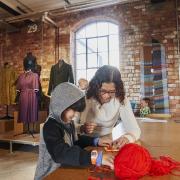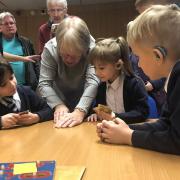Former headteacher Mike Smith provides you with some 'dos' and 'donts'
• DO choose a school with your child, but DON’T choose a school for your child.• DO shop around, but DON’T forget that children may be unhappy in a school that is not attended by friends from their own neighbourhood.• DO pay a visit to the school with your child, but DON’T simply rely on ‘open day’ visits. Make arrangements to visit during a working day and look for signs of businesslike and purposeful behaviour in staff and pupils – and for smiley faces.• DO ask to see the headteacher. The personality of a school is usually reflected in the personality of the head, regardless of how well he or she delegates, but DON’T pass up an opportunity to talk with other members of staff, particularly about their subject. Check on their level of enthusiasm, remembering that good teachers are motivated by a burning desire to pass on their enthusiasm for their subject to their pupils.• DO ask if you can have a walk around the school, preferably guided by a pupil, but DON’T be over-impressed by orderliness and silence. Look instead for signs of interaction between teachers and students. Of course, if you find yourself pinned against a corridor wall by a rush of passing pupils, think about another school!• DO look at wall displays and exhibitions of work, but DON’T forget to look for signs of browning and ageing on wall displays. And remember that displays are a showcase – a better bet is to look inside pupils’ exercise books, not least to see how frequently they are marked by the teacher.• DO pay a visit to the school library in order to check on the range and suitability of books and the extent of internet access, but DON’T be impressed by rows of neatly-stacked (unused) volumes. Lots of dog-eared, recently-published books are usually a sign of productive library use.• DO look at the level of equipment in laboratories, sports halls, drama rooms, music suites etc and at the school’s computer provision, but DON’T forget that wonderful equipment can never be a substitute for teachers who engage their pupils in entertaining and productive learning, and don’t forget that an IT suite full of computers is no substitute for computers that are in active, daily use in classrooms throughout the school.• DO look carefully at examination results, comparison statistics and league tables, but be careful to check the level of performance across the full range of subjects and do ask to inspect the results over a number of years. Ask for ‘value-added’ data, which compares the out-going attainment of pupils with their attainment on entry, and compare results with other schools in the same neighbourhood.• DO look at the range of subjects on offer, but DON’T be fooled by raw numbers of subjects. Look at the subject combinations that are available at GCSE and A-level. Can a pupil take two foreign languages? Is it possible to take History as well as Geography? How many pupils take up ‘minority’ subjects? Is there a healthy take-up of girls in science subjects and boys in arts subjects?• DO check on the number of extra-curricular activities on offer – music, sport, drama, outward-bound, language intensive courses etc, but DON’T rely on brochure statements. Have a look at the school notice board, which should give an indication whether extra-curricular activities take place on a regular basis and whether school life continues after the formal end of the school day.• DO look at the various guidebooks to schools, internet sites, prospectuses etc, but DON’T forget that some ‘Good School Guides’ only include schools on the basis that they have a high showing in examination league tables. Beware of prospectuses that place undue emphasis on a particular aspect of the school’s offerings and achievements, rather than school life in general.• DO ask about special needs provision, but DON’T forget to ask whether the school’s definition of students with special needs includes those that are particularly gifted and talented. And finally, remember the first and most important point: choose a school with your child, not for your child.


























